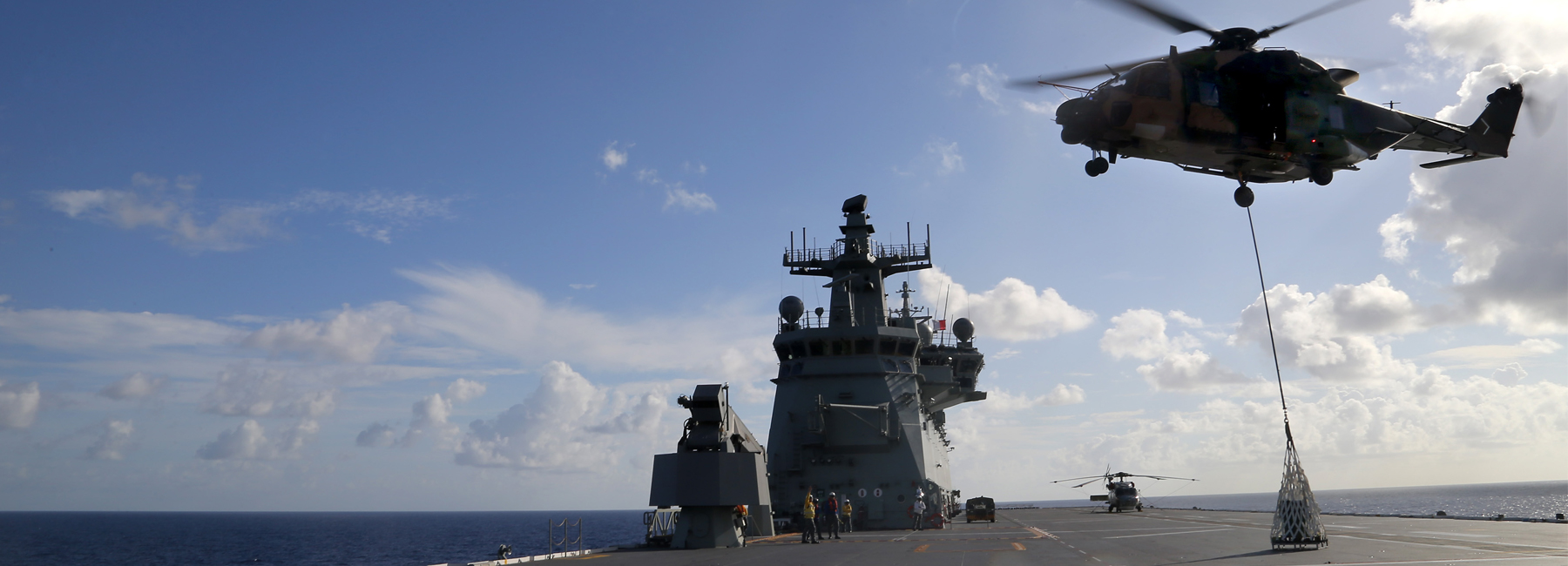As a trusted Australian Defence Force (ADF) service provider for 45+ years, DXC Technology has forged a strong partnership with the Royal Australian Navy (RAN).
DXC had already achieved significant success with two custom shore-based combat simulation training facilities in Sydney and Perth, enabling the RAN to train ANZAC frigate operations crews to detect targets and fire weapons within safe simulated combat environments.
“The simulated environment provided by MOBOTS is sufficiently realistic to allow more complex and intense training that is gaining higher quality results.”
Spokesperson RAN Sea Training Group
Whilst this approach worked well, high demand meant heavy use of both sites, with up to 20 operations crew spending one-week training ashore before conducting comprehensive ‘at sea’ training with the remaining ship’s company, and other ADF resources simulating combat activity — with high cost, time and complexity.
Alignment of mutual objectives versus competing objectives
The DXC team approached the RAN with the idea of installing an onboard simulator to address the shortfall in simulator availability and build on successful enhancements, such as networking the ANZAC simulators with the US Navy for joint training. Leveraging DXC’s technical capabilities, their deep understanding of the RAN’s desired outcomes, and advancing smaller technology, DXC prepared a comprehensive proposal to deliver the unique Mobile On-Board Training System (MOBOTS).
A “one team” culture
DXC’s proposal specified how the RAN could conduct training on board a working ANZAC frigate with all the ship’s company involved. This meant real frigate weapons, radars, communications, and other equipment could be used with training simulations running in a 24-hour environment to achieve greatly reduced costs, logistical complexity, time, and involvement from other ADF aircraft/vessels and resources.
After receiving approval to proceed with fast-tracked implementation, DXC designed and implemented the system in just eight weeks.
The first exercise, conducted on board two networked ANZAC frigates at Garden Island, Sydney, was highly collaborative with DXC team members working alongside specialised RAN training personnel during week-long exercises.
End user satisfaction, increased performance/efficiency
Christopher Carter, ANZAC class simulation systems specialist, DXC, was on board for all five exercises and saw the benefits firsthand. “Trainers from the RAN Sea Training Group appreciate the new solution’s flexibility. They can manipulate the training scenario in real-time based on training crews’ actions which gives a completely tailored product.”
A spokesperson from the RAN Sea Training Group stated, “The simulated environment provided by MOBOTS is sufficiently realistic to allow more complex and intense training that is gaining higher quality results. The ship’s company are now able to progress through the unit readiness workup process faster, in particular with Air Warfare and Anti-Ship missile defence training. We have therefore been able to reduce the total time of a workup which has saved the Navy sea days and money.”
Philip Springer, simulation co-ordinator, DXC, commented, “While working on board during a simulation, the senior operations room supervisor warned his operation room staff, that because the exercises are so realistic and asset rich which often can’t be duplicated at sea, they may be bored during the following training week at sea.”
Operational efficiencies for all affected parties
Before MOBOTS, it took six weeks to train a crew, with initial assessments of the new approach indicating this has reduced to four to five weeks with potential for crews to be released to Government tasking earlier, and lower Government tasking earlier, and lower wear and tear on both people and facilities.
MOBOTS was made possible through technology advancements, with any solution needing to fit through a small hatch and carried up a ladder by one person. Previously a full rack of servers was required, however substantial computing power improvements enabled DXC to create a small portable solution with the necessary high level processing capacity and speed. As basis for the solution, DXC utilised readily available compact high-end gaming machines specifically purchased for their processing power to ensure reliability.
Soft benefits of collaboration to all parties
With the simulator and operations room crew on board, interaction with the full ship’s company, and multiple ships’ involvement, training authenticity is profound. Where previously, training was limited by physical capacity to replicate targets, now with the frigate based simulator, RAN instructors and DXC personnel work together on board to drive targets. For example, previous physical fuel limitations for Air Force aircraft providing target support meant they may only appear two to three times a day. This virtual world achieves higher aircraft numbers and turnaround for increased complexity and a much more immersive experience.
For the size of Australia and its defence force, this technology and capability equals the best in the world with DXC believing the RAN is currently at technology’s forefront. The next logical step is joint exercises with the US Navy and multiple networked eastern and western seaboard RAN vessels.
Business results
With frigates docked, but activities appearing as they do at sea, the obvious benefit is cost with $2m estimated savings per exercise in jet fuel alone. Maintenance and operational savings are estimated at $8m per exercise (totalling $40m across the five exercises conducted).
Using MOBOTS, the ship’s company is exposed to extreme situations covering diverse scenarios including missiles flying at subsonic and supersonic speeds, aircraft coming from all directions, submarine attacks, sea attacks — a training quality, speed and intensity that cannot easily or cost effectively be replicated in the real world.
